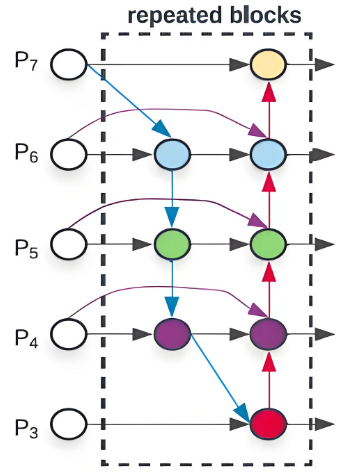Research on Auxiliary Diagnosis of Thoracic Fractures Based on Bidirectional Feature Pyramid Network
Keywords:
Thoracic vertebral fracture, Deep learning, YOLOv12, BiFPN modelAbstract
Thoracic fractures are a common occurrence in chest injuries, and traditional detection methods are prone to high rates of missed and false detections due to the complexity of thoracic fractures. However, detection methods based on deep learning technology have better detection performance and speed advantages. BiFPN enhances feature expression ability by dynamically adjusting the importance of each layer's features through bidirectional multiple fusion and utilizing a learnable weighting mechanism. This article uses a network model called YOLOv12+BiFPN for thoracic spine fracture detection, replacing the original feature fusion part in YOLOv12+BiFPN with the BiFPN structure. BiFPN allows multiple bidirectional information transfers between feature maps at different levels, improving the recognition ability of fracture areas of different sizes. It adds up-sampling and down-sampling paths to achieve bidirectional feature flow, designs weighted fusion nodes, and uses learnable weights to achieve adaptive feature combination. This module, with its efficient multi-scale feature fusion capability, not only significantly enhances the performance of object detection and classification, but also supports faster training and inference processes, demonstrating outstanding performance in processing large-scale image data. The improvement plan increased the mAP_0.5 index from 0.8612 to 0.9354, and achieved a robust increase of 0.41% to 1.2% in mIoU, while the inference speed only slightly decreased by 3%. The YOLOv12+BiFPN network proposed in this paper greatly improves the accuracy of thoracic fracture detection, significantly promoting the improvement of diagnostic efficiency and precision.
References
Krizhevsky A, Sutskever I, Hinton G E. Imagenet classification with deep convolutional neural networks[J]. Advances in neural information processing systems, 2012, 25.
Simonyan K, Zisserman A. Very Deep Convolutional Networks for Large-Scale Image Recognition. [J]. CoRR, 2014, abs/1409.1556.
Szegedy C, Liu W, Jia Y, et al. Going deeper with convolutions[C]//Proceedings of the IEEE conference on computer vision and pattern recognition. 2015: 1-9.
He K, Zhang X, Ren S, et al. Deep residual learning for image recognition[C]//Proceedings of the IEEE conference on computer vision and pattern recognition. 2016: 770-778.
Ling F, Jingchen M, Yacheng R, et al. Automatic detection of lung nodules: false positive reduction using convolution neural networks and handcrafted features[C]. Medical Imaging, SPIE, 2017.
Zhiyi L, Yejie Z. Development paradigm of artificial intelligence in China from the perspective of digital economics [J]. Journal of Chinese Economic and Business Studies, 2022, 20 (2): 207-217.
Yudong Z, Jin H, Shuwen C. Medical Big Data and Artificial Intelligence for Healthcare [J]. Applied Sciences, 2023, 13 (6): 3745-3745.
Ahmed M R, Zhang Y, Liu Y, et al. Single Volume Image Generator and Deep Learning-based ASD Classification[J]. IEEE Journal of Biomedical and Health Informatics, 2020, 24(11): 3044-3054.
Lin T H, Jhang J Y, Huang C R, et al. Deep Ensemble Feature Network for Gastric Section Classification[J]. IEEE Journal of Biomedical and Health Informatics, 2020, 25(1): 77-87.
Zhao Y, Liu Y, Kan Y, et al. Spatial-Frequency Non-local Convolutional LSTM Network for pRCC Classification[C]//International Conference on Medical Image Computing and Computer-Assisted Intervention. Springer, Cham, 2019: 22-30.
Li X, Shen L, Xie X, et al. Multi-resolution convolutional networks for chest X-ray radiograph based lung nodule detection[J]. Artificial intelligence in medicine, 2020, 103: 101744.
Li Z, Zhang S, Zhang J, et al. MVP-Net: Multi-view FPN with position-aware attention for deep universal lesion detection[C]//International Conference on Medical Image Computing and Computer-Assisted Intervention. Springer, Cham, 2019: 13-21.
Tao Q, Ge Z, Cai J, et al. Improving deep lesion detection using 3d contextual and spatial attention[C]//International Conference on Medical Image Computing and Computer-AssistedIntervention. Springer, Cham, 2019: 185-193.




